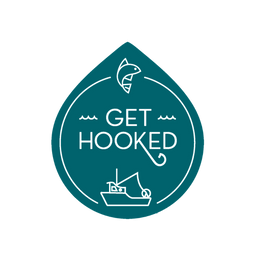Opah / David Haworth / Longline
Aug 29, 2022
YOUR FISHERMAN: DAVID HAWORTH
David is a heavyweight in the world of California fisheries. He has been fishing out of San Diego for 40 years, using traps, nets, lines and harpoons. He is a second generation fisherman, and works hard to keep consumers interested and able to buy local seafood. He has a booth at San Diego's Tuna Harbor Dockside Market, which operates every Saturday just like ours here in Santa Barbara.
David has been actively representing California fishermen by participating in various industry and fisheries management bodies, most notably, the Pacific Fisheries Management Council. This Council is one of 8 regional bodies of NOAA that set policies for fisheries. The Council process is highly bureaucratic, sometimes taking many years to make changes, but also highly participatory, taking pains to balance representation from commercial and recreational fleets, environmental groups, academia and government at all levels.
Fun fact: David Haworth's son, Nick, also a fisherman, lost his dog out at sea and found her alive and well 5 weeks later! Read the full story here.

ABOUT OPAH
Also called moonfish, Opah is large, colorful, and otherworldly. It has a rich, creamy taste. The flavor is a distinctive cross between tuna and swordfish.
An Opah has three types of flesh, each a different color. Behind the head and along the backbone is an attractive strip of orange-colored flesh. Toward the belly, the flesh pales to a pink color. The fish’s cheeks yield dark red flesh. All cook to a white color.

F/V: KAYLEE H
The Fishing Vessel Kaylee H is a long-line boat run by father son duo Nick and David Haworth in San Diego. Longline boats typically go out for trips lasting 1-4 weeks and target a variety of tuna and swordfish. They also land opah, monchong, wahoo, escolar, opah, and a few other non-targeted species that we have sourced for you in the past! Historically, it was the East Coast's demand for canned tuna in the early 1900s (following a sardine shortage) that encouraged the launch of Southern California's tuna industry. Boats in San Pedro, Long Beach, and San Diego began fishing California waters to support San Diego's first cannery, The Pacific Tuna Canning Company. After years of success turned into a booming need to export globally, a fleet of longline boats entered the scene, and have since held an important place in this crucial Southern California industry.
ABOUT THE FISHERY
Our fish this week was caught for us using longline gear. Longlining uses a main line with smaller lines attached loaded with baits separated at regular intervals. Longlining for tuna takes place at the ocean surface more than 200 miles from shore, which is just outside the boundary of U.S. waters.
This type of longlining is not allowed closer to shore to avoid interactions with coastal seabirds and marine mammals. Gear restrictions and regulations on longline operations are enforced to minimize bycatch of sensitive species. Observer coverage is high and all fishermen receive training on safe release of protected species using specialized equipment they are required to use. Consequently, interactions with protected species such as sea turtles, marine mammals, and seabirds in these fisheries are rare and survival rates are estimated to be high for all gear types.
This fishery primarily targets tuna, using spotter planes to locate a school of tuna. Opah and Wahoo sometimes school with the tuna and are taken as desired 'bycatch'. All three of these species are fast-growing and have high reproductive rates. Management measures are in place to minimize take of juveniles.
Management of highly migratory species like tuna is complicated because the species migrate thousands of miles across international boundaries and are fished by many nations.


